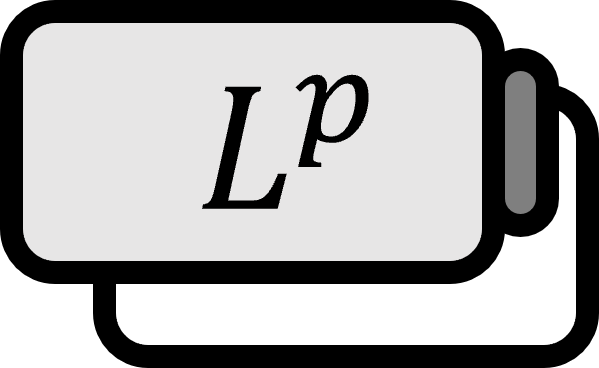フーリエ変換としての作用素
定義1
関数 $f$ のフーリエ変換
$$ \widehat{f} (\gamma ) := \int_{\mathbb{R}} f(x) e^{-2 \pi i x \gamma} dx, \quad \gamma \in \mathbb{R} $$
は、以下の作用素 $\mathcal{F}$ としても表される。
$$ (\mathcal{F} f) (\gamma ) := \widehat{f} ( \gamma ) $$
説明
フーリエ変換は解析学全般で広く使用されており、二つの表現 $\widehat{f}$ と $\mathcal{F} f$ は本質的に違いはないが、記号を使用する際のニュアンスが少し異なる。実際の計算や公式、速記に重点を置く場合は $\widehat{f}$ が好まれ、作用素としての性質や演算順序が重要な場合は $\mathcal{F}$ が好まれる。
$f,g \in L^{1}$ としよう。
- $a \in \mathbb{R}$ に対して
$$ \mathcal{F} T_{a} = E_{-a} \mathcal{F} $$
- $b \in \mathbb{R}$ に対して
$$ \mathcal{F} E_{b} = T_{b} \mathcal{F} $$
- $c \ne 0$ に対して
$$ \mathcal{F} D_{c} = D_{1/c} \mathcal{F} $$
- コンボリューション:
$$ \mathcal{F} ( f \ast\ g) = (\mathcal{F} f \cdot \mathcal{F} g) $$
1~3: $T_{a}, E_{b}, D_{c}$ はトランスレーション、モジュレーション、ディレーションである。
4: $\ast$ はコンボリューション畳み込みで、$\cdot$ は単に関数の積を意味する。つまり、$\gamma \in \mathbb{R}$ に対して
$$ \widehat{f \ast\ g} (\gamma) = \widehat{f} (\gamma) \widehat{g} (\gamma) $$
$f , g \in L^{2}$ としよう。
ノルム: $$ \left\| \mathcal{F} f \right\|_{2} = \left\| f \right\|_{2} $$
内積:
$$ \langle \mathcal{F} f , \mathcal{F} g \rangle = \langle f , g \rangle $$
上記の性質はフーリエ解析で広く知られているものを、作用素論の言葉で再び表わしたものである。
証明
1~4の証明については、こちらを参照。
■
関連項目
Ole Christensen, Functions, Spaces, and Expansions: Mathematical Tools in Physics and Engineering (2010), p126-127 ↩︎
